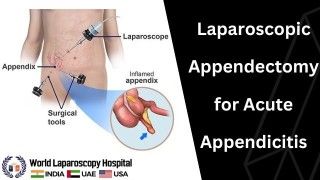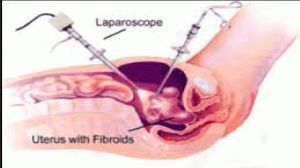Laparoscopic Management of Rupture Pediatric Appendix in Pediatric Patient
Add to
Share
237 views
Report
2 months ago
Description
Acute appendicitis is one of the most common surgical emergencies in pediatric patients. Delayed diagnosis can lead to rupture, resulting in peritonitis, abscess formation, and increased morbidity. The advent of laparoscopic surgery has significantly transformed the management of ruptured appendices in children, offering a minimally invasive approach with faster recovery, less postoperative pain, and better cosmetic outcomes. Clinical Presentation: Pediatric patients with ruptured appendicitis often present with: Abdominal pain, initially peri-umbilical, later localizing to the right lower quadrant Fever and irritability Nausea, vomiting, and anorexia Abdominal distension or generalized tenderness in advanced cases Occasionally, signs of sepsis in severe perforation Diagnostic Workup: Diagnosis relies on a combination of clinical evaluation and imaging: Ultrasound: First-line in children, helpful to detect perforation and abscess formation CT Scan: Reserved for complicated or unclear cases Laboratory Tests: Leukocytosis with neutrophilia is common; CRP may be elevated Indications for Laparoscopic Management: Laparoscopy is indicated in pediatric patients with: Suspected or confirmed perforated appendix Intra-abdominal abscess or localized peritonitis Failure of conservative management in complicated appendicitis Surgical Technique: Patient Positioning: Supine with slight Trendelenburg and left tilt. Port Placement: Typically, a three-port approach is used – an umbilical port for the camera and two working ports in the left lower quadrant and suprapubic region. Exploration: Laparoscopic evaluation of the abdominal cavity to identify perforation, pus, and adhesions. Appendectomy: The appendix is carefully mobilized and divided using an endoloop or stapler. Care is taken to avoid spillage of infected contents. Peritoneal Toilet: Thorough irrigation of pus and necrotic tissue using warm saline. Suction drains may be placed selectively. Closure: Ports are closed in layers, with skin closure done cosmetically. Advantages of Laparoscopic Approach: Reduced postoperative pain and analgesic requirement Early resumption of oral feeding Shorter hospital stay compared to open surgery Better visualization of the abdominal cavity for thorough cleaning Minimal scarring and better cosmetic outcome Postoperative Care: Broad-spectrum intravenous antibiotics tailored to culture sensitivity Early mobilization and initiation of oral intake Monitoring for complications like intra-abdominal abscess or wound infection Follow-up imaging if symptoms persist Outcomes: Studies have demonstrated that laparoscopic management of ruptured pediatric appendix is safe and effective. The rate of postoperative complications, including intra-abdominal abscess, is comparable or slightly lower than open surgery when performed by experienced surgeons. Conclusion: Laparoscopic management of ruptured appendicitis in pediatric patients is now considered a standard of care in many centers. It offers a minimally invasive, effective, and safe approach, ensuring rapid recovery, reduced morbidity, and excellent postoperative outcomes. Early recognition and prompt surgical intervention remain crucial for optimal results.
Similar Videos





